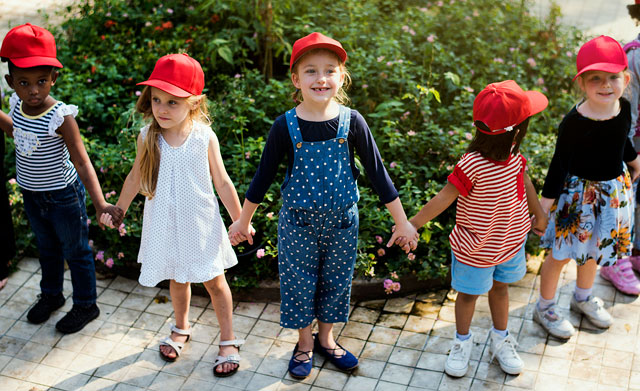According to the 2020 Annual Report to Congress on IDEA (the Individuals with Disabilities Education Act), more than 67 percent of preschoolers with disabilities (ages 3–5) attend programs with typically developing peers. Inclusion in preschool and childcare occurs when children with and without disabilities learn and play together. Early childhood educators in childcare programs have an important role in promoting inclusion. (Learn more about quality inclusive practices in our Inclusion in Preschool Classrooms tip sheet.)
Children with disabilities and developmental delays attending childcare might receive services from a variety of professionals, including speech and language therapists (SLP), occupational therapists (OT), physical therapists (PT), and others to support their growth and learning. Regardless of how special education services are delivered, the partnerships among professionals are key.
Learn who your partners are
Childcare educators and directors can begin to build awareness of the special education professionals in their local area. Reaching out to the school district is a good place to start to understand the local availability for screenings, evaluations, and special education services for preschool-aged children.
Families may also choose to work with private providers; these could include SLPs, OTs, PTs, and behavioral therapists in the community. Combined, this can be a helpful resource list for parents who are looking for special education services or other supports. (More information on assessment and evaluation is available in our Special Education Assessment tip sheet series.)
Welcome partners
Children with disabilities and developmental delays have an Individual Education Plan (IEP), which outlines the type and amount of services (e.g., speech, occupational therapy) they will receive from their local school district. A child enrolled in childcare may receive these services from an itinerant provider, which is someone who visits to provide services but is not in the classroom all the time. Here are some tips for childcare providers that can make this process go well:
- Have a welcoming atmosphere in your classroom.
- Spend time observing how a therapist works with a child because they have different training than you. For example, the SLP works with 4-year-old Sophie one-on-one in the classroom, practicing a back-and-forth conversation and encouraging Sophie to articulate certain sounds. Later, you can continue working on conversation and articulation skills at snack time or during small group work.
- Share your classroom rules. You might have unique rules that you want other adults to abide by in your classroom, such as washing your hands when you enter the room or not sitting on tabletops.
- Share your daily or weekly classroom schedule; you don’t want someone coming in to do therapy during nap time!
Communicate effectively
Communication about goals and strategies can and should be shared across professionals so carry-over can occur in the childcare classroom. Carry-over is when, for example, the PT encourages 3-year-old Jaime to hold the railing for balance when going up the stairs. Childcare educators can then encourage Jaime to hold on as she navigates the stairs on her way to movement class.
Here are some additional communication tips for childcare educators:
- Share contact information. Email is a great way to communicate about a child’s progress.
- Collect information about how the child is learning and growing in your classroom, whether you do that through observations, checklists, or an app. Share your observations with the team.
- If possible, attend IEP meetings with the team.
- If the child is struggling in the classroom, reach out to the child’s therapists for support and ideas to try.
Celebrate accomplishments
Childcare educators and special education providers can celebrate achievements as a team. If a child hits a milestone that they have been working hard at, celebrate! For example, 5-year-old Kateri just took a stab at writing a “K” on the sign-in sheet using a chunky pencil, which is one of her goals in occupational therapy. The childcare educator can email the occupational therapist to celebrate. A photo of the accomplishment also can be shared with Kateri’s family.
Early childhood educators at the childcare center have a key role in supporting the child with disabilities and are part of a professional team. The early childhood educator doesn’t have to do it all and can learn so much from working closely with related service providers.

Natalie Danner
Dr. Natalie Danner is a Content Specialist for the Illinois Early Learning Project. She has worked in university-based early childhood teacher preparation programs in Nebraska, Oregon, and Connecticut and as an early childhood teacher and school leader in New York City and Arizona. She earned her Ph.D. in early childhood special education from the University of Illinois at Urbana-Champaign.
Biography current as of 2021
IEL Resources
- Tip Sheets:
- Resource List: Early Childhood Special Education and Inclusive Child Care


